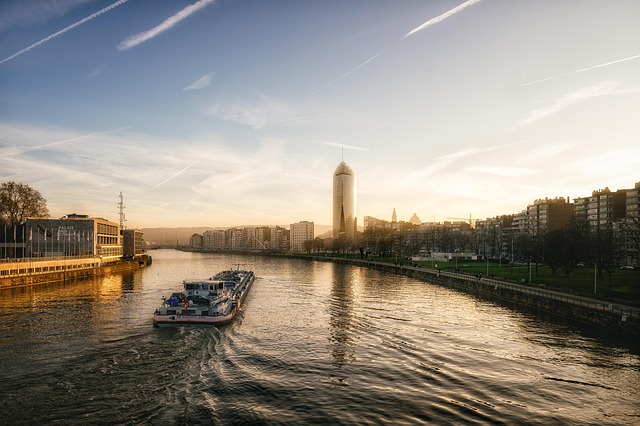Karachi's Air Quality Index (AQI) helps monitor pollution levels, with lower values indicating better air quality. Major roads like Northern Bypass often show higher AQI due to traffic and industrial emissions. Karachi's weather patterns create complex air pollution dynamics. Staying informed about AQI empowers residents to take precautions during high pollution periods. While the Northern Bypass has reduced congestion emissions in some areas, it may increase pollution in ecologically sensitive zones and near industrial areas. Continuous monitoring and sustainable transport strategies are vital to maintain Karachi's efforts towards cleaner air. Strategic measures include stricter emission standards, renewable energy promotion, tree planting, and public-private partnerships.
In Karachi, understanding the Air Quality Index (AQI) is crucial for gauging environmental health, especially near industrial areas like Northern Bypass. This bustling metropolis faces significant air pollution challenges, exacerbated by heavy traffic and industrial emissions. This article delves into the AQI dynamics near Northern Bypass, exploring its impact on local air quality and presenting strategies to improve conditions in this densely populated region of Karachi.
- Understanding Air Quality Index in Karachi
- The Impact of Northern Bypass on Local Air Quality
- Strategies to Improve Air Quality Near Industrial Areas
Understanding Air Quality Index in Karachi

The Air Quality Index (AQI) is a critical metric for understanding and communicating air pollution levels in Karachi, Pakistan’s bustling metropolis. It provides a standardized way to measure and report on the quality of the air we breathe. The AQI scale ranges from 0 to 500, with lower values indicating better air quality. In Karachi, areas near major roads like the Northern Bypass often have higher AQI readings due to increased traffic density and industrial emissions.
Karachi’s diverse geographical landscape and unique meteorological conditions contribute to complex air pollution patterns. The city’s hot, dry summers and cool winters influence how pollutants disperse in the atmosphere. Understanding the AQI helps residents take proactive measures during periods of high pollution, such as wearing masks or limiting outdoor activities. By staying informed about the local AQI, Karachis can make conscious choices to protect their health and contribute to a healthier urban environment.
The Impact of Northern Bypass on Local Air Quality

The construction and subsequent opening of the Northern Bypass in Karachi have had mixed effects on the city’s air quality. While the bypass was designed to alleviate traffic congestion, reduce travel time, and improve overall urban mobility, its impact on environmental conditions is a concern for many residents. On one hand, it has successfully decreased congestion-related emissions in certain areas, leading to improved air quality indices during peak hours. This is particularly noticeable in neighborhoods adjacent to the bypass, where vehicle movement has been streamlined.
However, there are also potential drawbacks. The Northern Bypass passes through ecologically sensitive zones and industrial areas, which could lead to increased pollution levels. Trucks and heavy vehicles using the bypass may contribute to elevated noise and particulate matter emissions, impacting nearby residential areas. Additionally, if not properly managed, construction activities along the bypass route can temporarily exacerbate air quality issues due to dust and debris generation. These factors underscore the importance of continuous monitoring and implementing sustainable transport strategies to ensure that the Northern Bypass does not compromise Karachi’s long-term efforts towards cleaner and healthier air.
Strategies to Improve Air Quality Near Industrial Areas

To improve air quality near industrial areas like Northern Bypass in Karachi, several strategic initiatives can be taken. One key approach is to implement stricter emission standards and regulations for industries, ensuring they adopt cleaner production technologies and processes. This includes regular monitoring of pollution levels and imposing penalties on non-compliant entities. Additionally, promoting the use of renewable energy sources among industries can significantly reduce their carbon footprint.
Green spaces and urban forests play a crucial role in mitigating air pollution. Planting trees along major roads and industrial belts can act as natural filters, absorbing harmful pollutants. The city administration should prioritize developing and maintaining these green areas to create a healthier environment. Encouraging public-private partnerships for environmental initiatives is another effective strategy, fostering collaboration that can lead to more substantial improvements in air quality across Karachi.
In light of the above discussions, it’s clear that the air quality index near Northern Bypass in Karachi faces significant challenges due to industrial activities. However, by understanding the Air Quality Index and its impact on public health, along with implementing effective strategies like stricter emission norms, green infrastructure, and waste management practices, Karachi can strive for cleaner air. Collaborative efforts from industries, government bodies, and citizens are essential to improving and maintaining air quality in this vibrant city.



